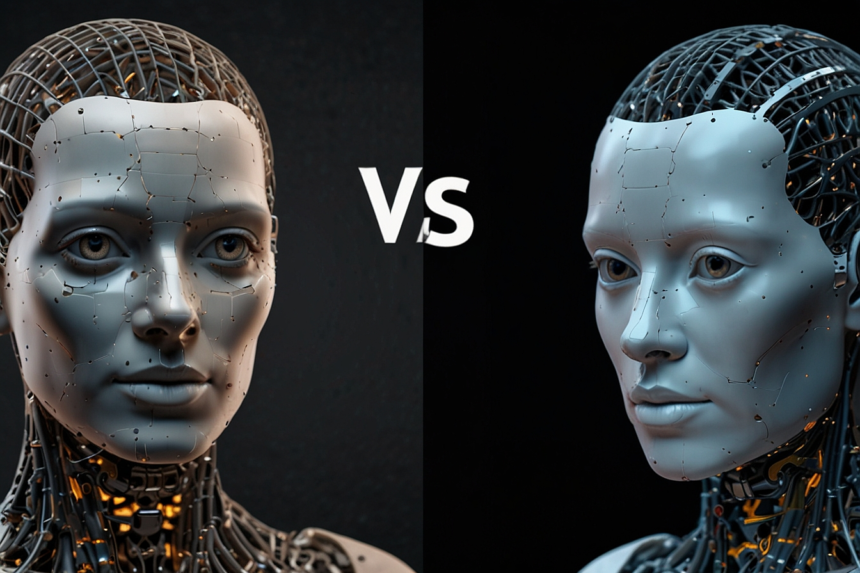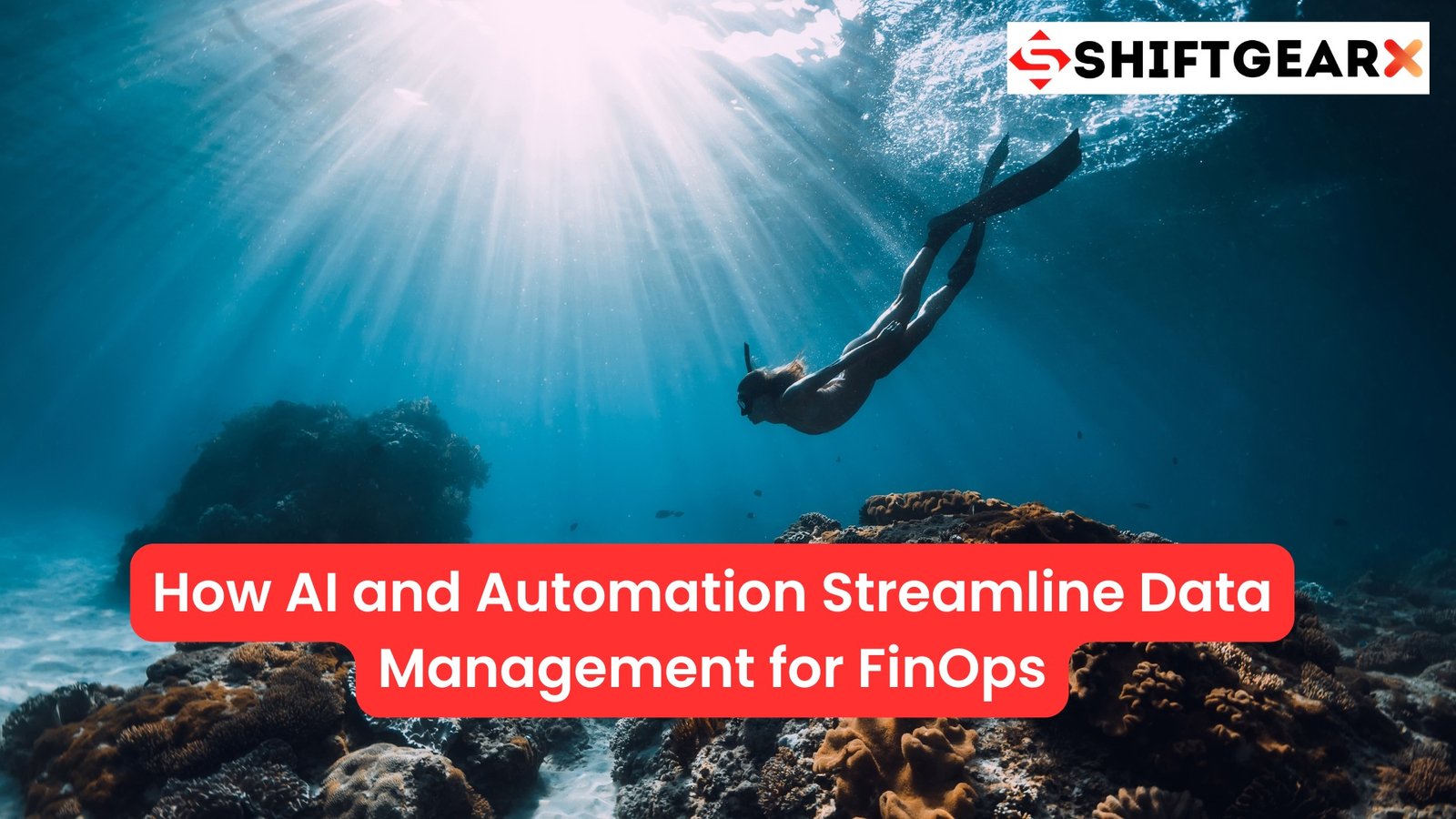AI is changing the Game
The Tech world is changing dramatically and you know what, AI is changing the game, reshaping industries, and altering our tech interactions. Two main types, generative AI and predictive AI, are at the forefront. It’s important to know the difference to fully use their powers. Today, let’s discuss Generative AI vs Predictive AI. We’ll look at what sets them apart and how they’re used in different ways.
Unveiling the Basics of AI

To understand artificial intelligence (AI), we must examine its fundamental components. These components are pivotal in today’s technological evolution. AI aims to replicate human cognitive abilities in machines. This replication enables machines to perform tasks requiring human intelligence, such as pattern recognition, decision-making, and natural language comprehension.
At the heart of AI’s capabilities lies machine learning. This branch enables computers to learn and adapt autonomously. They achieve this without being pre-programmed for specific tasks. Algorithms analyze data, extract insights, and make informed choices. This process parallels how ERP systems adapt to dynamic business environments, much like SAP and MS Dynamics evolving to meet diverse industry needs.
Imagine a machine learning model that improves at distinguishing cats from dogs as it processes more data. Further exploration leads us to deep learning, a more advanced AI subset. Deep learning is inspired by the neural networks of the human brain.
Deep learning algorithms are structured in hierarchical layers. Each layer processes data with increasing sophistication. This achieves complexity once thought beyond reach. Like our brains processing a face, these layers work sequentially. They move from interpreting basic contours to identifying specific features.
Ultimately, exploring AI starts with machine and deep learning principles. This paves the way for advanced domains like generative and predictive AI. These technologies emulate and amplify human cognition. They expand what can be achieved and revolutionize our digital engagement.
Grasping these foundational elements illuminates AI’s evolution from basic automation to intricate, inventive functions. These functions are now being developed with foresight.
What is Predictive AI?
At the core of our journey into artificial intelligence’s various sectors is Predictive AI, a formidable force in advanced technology. This aspect of AI focuses on foresight, akin to a crystal ball, yet it’s driven by data and algorithms instead of mysticism.
Predictive AI delves into historical data, navigating vast information to project future occurrences and behaviors precisely. Imagine predicting the next major trend in consumer electronics or detecting a significant stock market shift beforehand. This is the power of Predictive AI.
This technology goes beyond mere conjecture. It utilizes intricate statistical models and machine learning algorithms to discern patterns in data that might elude human detection. Predictive AI is revolutionizing decision-making across sectors. In healthcare, it can foresee disease outbreaks. In e-commerce, it predicts customer buying patterns. This makes decision-making more data-driven and accurate.

Predictive AI Algorithms
It’s not merely about responding to the unfolding world; it’s about proactively preparing for what’s to come with assurance. In the financial sector, Predictive AI algorithms analyze market data to anticipate stock movements. This helps investors make well-informed choices. In marketing, it examines consumer data to predict product appeal across demographics. This allows for customized, highly effective campaigns.
The applications are varied and impactful, showcasing the immense potential of using past insights to chart a course ahead. By adopting Predictive AI, enterprises can explore numerous opportunities. This allows them to maneuver and prosper in a constantly evolving environment.
This pioneering segment of AI highlights the influence of data in shaping the future. It offers a glimpse of what is achievable when we can predict the unforeseen.
Applications of Predictive AI
| Application Area | Use Case | Benefit |
|---|---|---|
| Healthcare | Predicting disease outbreaks | Enables proactive measures, improves public health |
| Finance | Analyzing market data to predict stock movements | Informs investment decisions, reduces financial risk |
| Marketing | Predicting customer behavior | Personalizes marketing strategies, enhances customer satisfaction |
| Logistics | Forecasting supply chain disruptions | Improves efficiency, reduces operational costs |
| Retail | Predicting sales trends | Optimizes inventory management, boosts sales |
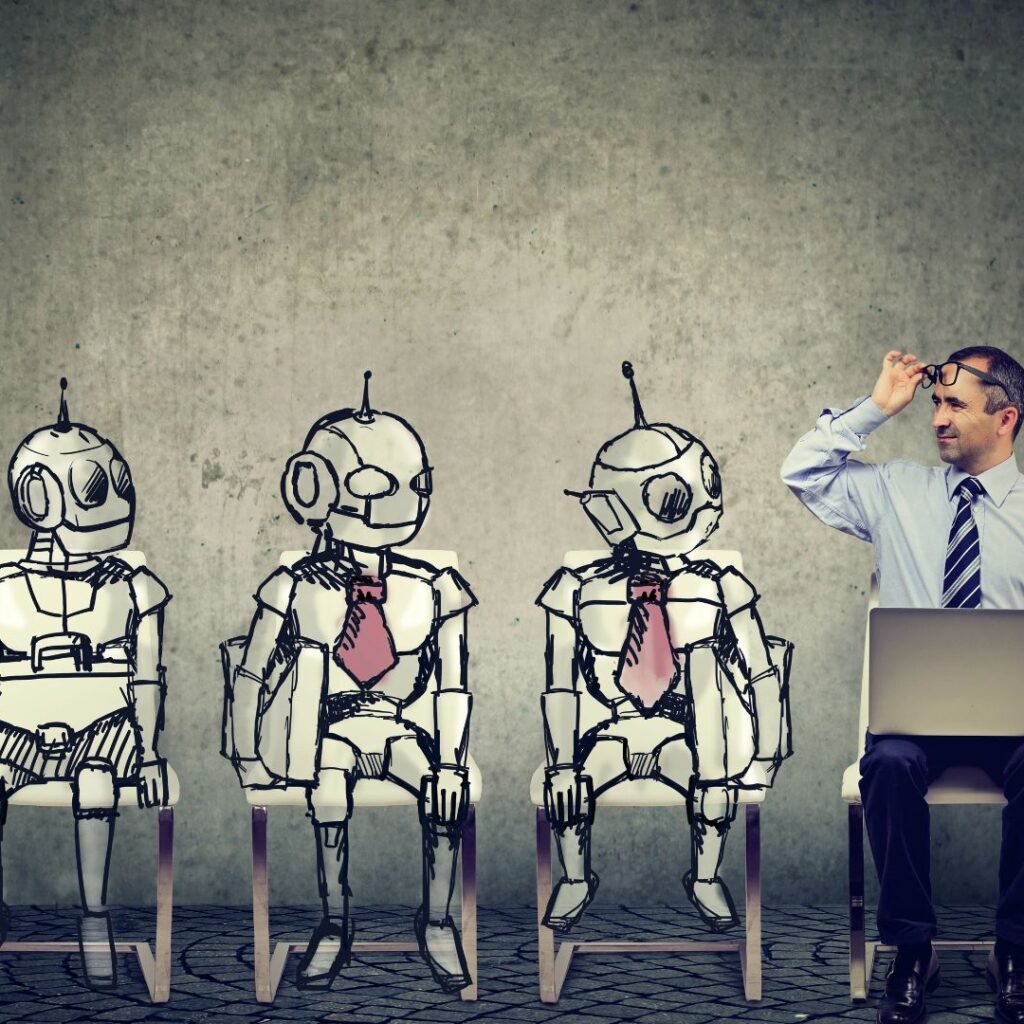
Exploring the Realm of Generative AI
Generative AI resides at the nexus of innovation and imagination, expanding the horizons of machine-generated creations. This intriguing domain of artificial intelligence transitions the focus from mere prediction and analysis to the origination of completely new content.
Generative AI creates realistic images, complex music, and elaborate written narratives from its digital intellect. Its enchantment lies in its ability to assimilate vast data, master subtleties and patterns, and artistically generate novel outputs. These outputs can engage, inspire, and occasionally perplex human audiences.
The catalysts for this creative surge are primarily Generative Adversarial Networks (GANs) and Recurrent Neural Networks (RNNs). These advanced algorithms engage in a digital ideation process. One segment fabricates content, while another appraises it, fostering a perpetual cycle of invention and assessment.
This iterative refinement elevates the outputs to not only be novel but also significant and contextually apt, thus diminishing the distinction between art produced by humans and machines. Generative AI is unlocking new possibilities across diverse sectors. In the realms of art and design, it empowers artists to delve into unprecedented forms and articulations, making once elusive ideas tangible.
In the sphere of entertainment, it animates enthralling narratives and melodies, augmenting the creative ecosystem. Moreover, within the commercial landscape, it is transforming product development, marketing, and consumer experiences by delivering bespoke and groundbreaking solutions on a scale never seen before.
Engaging with generative AI transcends mere technological comprehension; it is an observation of a burgeoning epoch of creativity and innovation. It signifies a momentous paradigm shift in our recognition of machine potential, redefining them from simple instruments of productivity to conduits of creativity.
Applications of Generative AI
| Application Area | Use Case | Benefit |
|---|---|---|
| Art and Design | Generating new art forms and design patterns | Expands creative possibilities, provides inspiration |
| Entertainment | Creating narratives and music | Enhances storytelling and content creation |
| Marketing | Developing unique marketing campaigns | Increases engagement through novel content |
| Product Development | Rapid prototyping and design generation | Speeds up development process, reduces costs |
| Education | Creating educational materials | Provides personalized learning experiences |
Generative AI vs Predictive AI: The Key Differences
In the intricate domain of artificial intelligence, it is crucial to differentiate between generative AI and predictive AI, as each fulfills a distinct function, steered by separate methodologies and goals. Predictive AI, rooted in statistical analysis and machine learning, specializes in forecasting.
It serves as the oracle of AI, scrutinizing past and current data to foresee future occurrences, behaviors, and patterns. This AI segment is future-oriented, proving vital in situations where anticipating subsequent developments offers a competitive edge to businesses or individuals. Conversely, generative AI is the inventive dynamo of the domain.
It transcends mere prediction or analysis of extant patterns; it forges entirely new creations. Harnessing sophisticated algorithms like GANs (Generative Adversarial Networks), generative AI fabricates fresh content, be it imagery, prose, or melodies, that can emulate or even eclipse human inventiveness. Its capacity to produce unprecedented outputs from assimilated data distinguishes generative AI.
While predictive AI utilizes past data to project the future, generative AI applies its data comprehension to pioneer and craft. The fundamental distinction between them is their approach and utilization. Predictive AI is akin to a tactician, equipped with data, poised to prognosticate and strategize.
In contrast, generative AI is akin to an artist, endowed with creativity, with the capability to manifest novel entities. Both are revolutionary, yet they address divergent requirements and ambitions within the expansive terrain of AI technologies.
Grasping this differentiation allows for the optimal exploitation of each AI type’s forte, whether it’s for driving innovation in the creative sphere with generative AI or for executing educated forecasts with predictive AI.
Key Differences Between Generative AI and Predictive AI
| Feature | Generative AI | Predictive AI |
|---|---|---|
| Core Function | Creates new content | Predicts future events |
| Primary Algorithms | GANs (Generative Adversarial Networks), RNNs (Recurrent Neural Networks) | Machine Learning, Statistical Models |
| Focus | Innovation and Creativity | Foresight and Decision-Making |
| Application Areas | Art, Music, Design, Marketing, Product Development | Healthcare, Finance, Marketing, Logistics |
| Output | Images, Music, Text | Forecasts, Trends, Predictions |
| Data Utilization | Assimilates data to generate new outputs | Analyzes historical data to predict future outcomes |
| Example Use Cases | Creating realistic images, composing music | Predicting stock market trends, forecasting customer behavior |
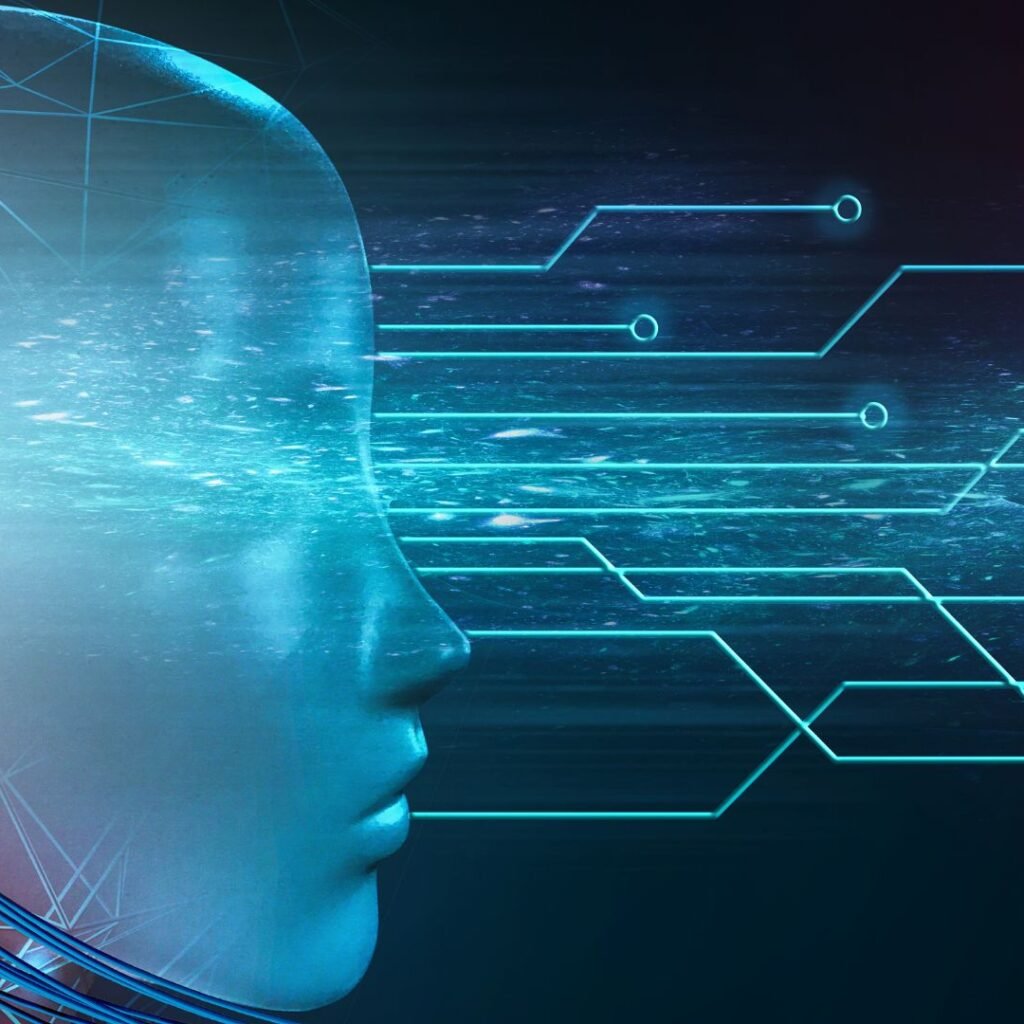
The Power of Prediction: Deep Diving into Predictive AI’s Capabilities
Venturing into the domain of Predictive AI reveals a landscape where foresight transcends mere virtue to become a formidable power, fueled by the complexities of machine learning and data analysis.
This facet of artificial intelligence transforms raw data into valuable predictions. It offers insights that can change enterprises, medical care, and daily life. Predictive AI’s scope goes beyond simple future projections. It involves comprehending and applying knowledge with accuracy and discernment.
Envision a scenario where medical professionals can foresee health crises before they manifest, or merchants can predict consumer behavior patterns with remarkable precision. Predictive AI facilitates this by analyzing historical data, detecting trends, and leveraging these findings to predict upcoming occurrences.
It serves as a tactical consultant for corporations, steering them through the complexities of market unpredictability with empirical assurance. Predictive AI enhances logistical effectiveness and customizes marketing approaches. By analyzing consumer actions, businesses can create experiences that exceed expectations. This fosters customer loyalty and stimulates growth.
Within finance, the ability to identify economic trends empowers investors to make informed choices. This reduces risks and seizes opportunities. Predictive AI’s essence lies in illuminating the future and equipping decision-makers to navigate it effectively.
It is about transforming insight into tangible action, guaranteeing that each decision is calculated, methodical, and anticipatory. With its extensive comprehension of data and its anticipatory acumen, Predictive AI is pushing the frontiers of what’s achievable, one prediction at a time.

Unleashing Creativity with Generative AI
Generative AI is revolutionizing the realm of creativity, providing artists, designers, and innovators with a tool that surpasses conventional limits. This facet of artificial intelligence is not just a supportive entity but a dynamic collaborator in the creative process, facilitating the creation of fresh and captivating works.
By assimilating extensive datasets, generative AI recognizes patterns and styles, reinventing them in surprising and inspiring ways. It creates visual artworks echoing human emotions and devises melodies that touch the heart. Generative AI acts as a digital era muse.
The most compelling aspect of generative AI is its ability to make creativity more accessible. It enables individuals who may have lacked artistic skills or resources to realize their creative aspirations with AI-driven tools. This unlocks a spectrum of opportunities for personal expression and narrative, allowing for the amplification of diverse voices.
In the sphere of business and innovation, generative AI is transformative. It streamlines rapid prototyping, from product designs to marketing strategies, enhancing efficiency and cost-effectiveness. Generative AI offers a vast array of creative solutions and alternatives. This helps leaders consider more options before making final decisions.
Ultimately, generative AI serves as a conduit from imagination to reality, enabling creators to explore new domains of creativity. Its influence extends beyond art, impacting education and entertainment. Generative AI becomes an essential tool for contemporary innovators.

The Synergy Between Generative and Predictive AI
Envision the transformative potential of merging Predictive AI’s forward-thinking insights with Generative AI’s inventive prowess. This alliance fosters an environment ripe for innovation, surpassing the singular capabilities of each AI domain.
Through this partnership, enterprises and innovators can create solutions that are both reactive and trailblazing. In product development, AI’s predictive power anticipates consumer patterns. This informs the ideation of novel products.
Generative AI can then take the helm to sculpt these products in distinctive and attractive ways, informed by the predictive insights. This symbiotic exchange guarantees that product designs are not merely innovative but also in sync with prospective market trends. When it comes to content generation, this collaboration has the potential to redefine personalization.
Predictive AI can dissect user data to discern preferences and predict future content inclinations. Generative AI can then harness this data to forge content that resonates with these preferences, ensuring user engagement and contentment.
This tailored approach to content generation holds the promise to revolutionize user experiences on digital platforms, rendering them more captivating and interactive. Likewise, in customer service, the amalgamation of predictive and generative AI can give rise to customized and proactive support mechanisms.
Chatbots empowered by both AI facets can foresee customer queries and craft responses that are pertinent, prompt, as well as empathetic and nuanced, thereby elevating the customer service paradigm. This vibrant synergy between generative and predictive AI exemplifies the confluence of analytical acumen and creative flair.
By harnessing their joint strengths, we set the stage for groundbreaking innovations that challenge the status quo, propelling the boundaries of technological progress and creative ingenuity.
Synergy Between Generative AI and Predictive AI
| Combined Use Case | Generative AI Role | Predictive AI Role | Benefit |
|---|---|---|---|
| Personalized Marketing Campaigns | Creates unique and engaging content | Predicts customer preferences and trends | Increases customer engagement and conversion rates |
| Product Development | Designs innovative product prototypes | Predicts market demand and customer needs | Aligns products with market trends, reduces time-to-market |
| Customer Service | Generates tailored responses | Anticipates customer inquiries and issues | Enhances customer satisfaction, reduces response time |

Future Trends in AI: What’s Next?
As we look towards the future of artificial intelligence, it becomes evident that the exploration of generative and predictive AI is in its nascent stages. The forthcoming surge in AI innovation is expected to be driven by novel trends that aim to intensify our engagement with technology.
Notably, explainable AI (XAI) emerges as a key trend, providing insight into the typically inscrutable decision-making processes of AI systems. This progression aspires to clarify the complexities of AI, building trust and comprehension in its uses.
Federated learning introduces a distributed method for machine learning, training algorithms across various devices while retaining data on-site, thereby tackling pressing issues of privacy and data protection. This approach not only bolsters user confidence but also paves the way for AI advancements in sensitive domains such as healthcare and finance.
Reinforcement learning, grounded in the principles of behavioral psychology, emulates a trial-and-error learning mechanism for machines. This method allows AI to adopt optimal behaviors via rewards and punishments, enhancing effectiveness in volatile and unpredictable settings.
Its capacity to improve decision-making in real-time marks a substantial advancement in the capabilities of both predictive and generative AI. Collectively, these developments indicate a move towards AI solutions that are more self-reliant, ethical, and tailored to individual needs. As we adopt these innovations, the domain of artificial intelligence is set to transform, fostering more profound interactions between humans and machines and opening up unprecedented prospects.
The future of AI revolves not only around the tasks machines can perform for us but also around how they can augment our comprehension of the world and our place within it.
Navigating the Challenges and Ethical Considerations
The ethical landscape of generative and predictive AI is complex, akin to navigating a tightrope. As we progress in innovation, it’s imperative to balance technological growth with ethical principles. AI’s captivating abilities, from predicting market trends to generating creative works, bring forth ethical dilemmas, particularly concerning data privacy.
In an era where data equates to wealth, it’s crucial to prevent its unethical exploitation. The challenge lies in leveraging predictive AI’s power without violating individual privacy rights. The issue of inherent bias in AI algorithms is equally critical.
These systems, trained on historical data, may unintentionally continue existing biases if not rigorously audited and amended. Developers and practitioners bear the responsibility to enforce measures that detect and mitigate bias, ensuring AI promotes equity rather than perpetuating discrimination.
Furthermore, generative AI’s emergence prompts debates on the authenticity and ownership of AI-created content. With machines now able to produce art, literature, and music, we must reevaluate our concepts of creativity and intellectual property rights.
Clear guidelines and ethical frameworks are necessary to discern the boundaries between human and AI-generated art. To tackle these issues, a cooperative approach involving stakeholders from technology, legal, ethical, and societal domains is vital.
Encouraging open discussions and forming interdisciplinary teams can help in crafting AI technologies that not only extend the boundaries of possibility but also adhere to stringent ethical standards. This path demands ongoing vigilance, flexibility, and a dedication to integrity, ensuring that our technological advancements are always aligned with ethical guidance.
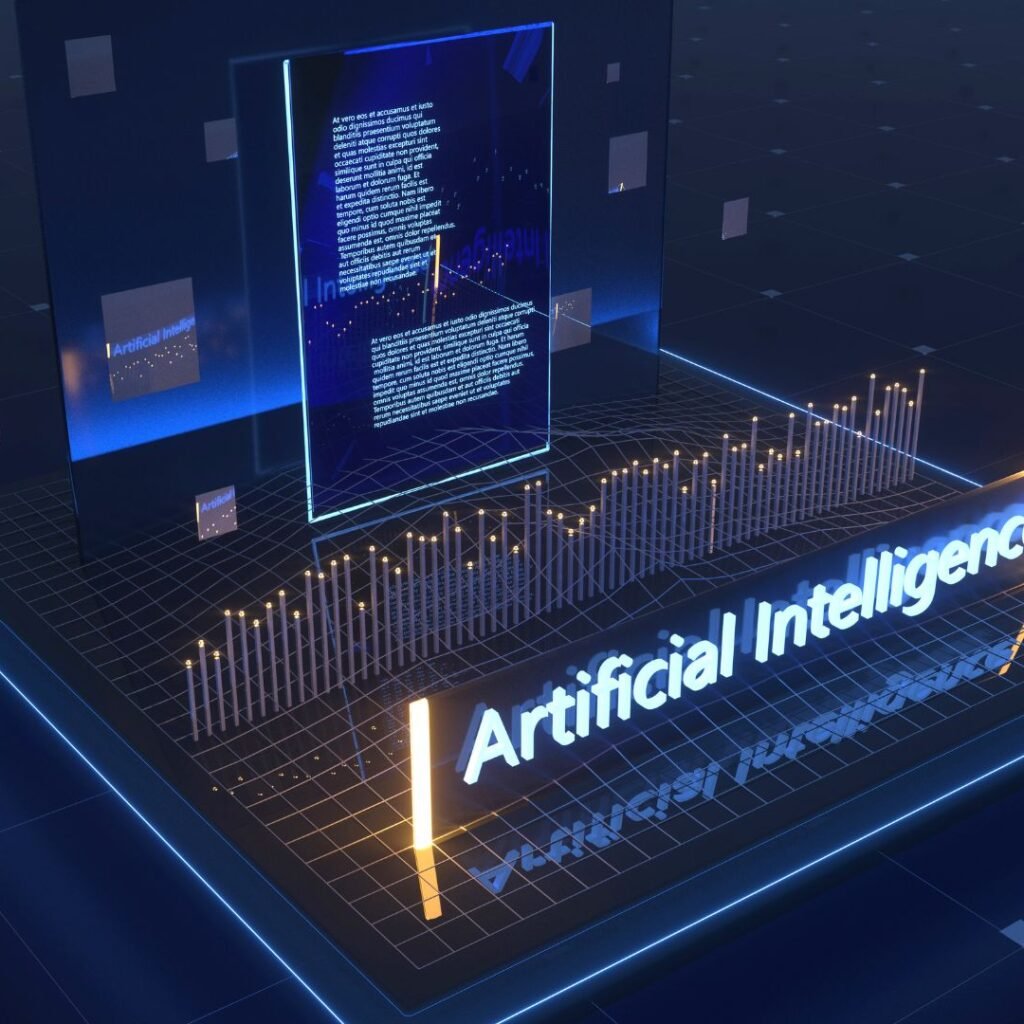
How to Leverage Generative and Predictive AI in Your Domain
To harness the transformative potential of generative and predictive AI in your field, begin with a precise identification of the challenges and opportunities for applying these technologies. Conduct an exhaustive analysis of your current operations to identify areas where AI can boost efficiency, drive innovation, or elevate customer satisfaction.
Collaborating with AI experts and tapping into their knowledge is essential for developing AI solutions that are innovative and strategically aligned with your objectives. Viewing AI investment as a crucial step in future-proofing your organization is imperative.
This involves dedicating resources to acquire state-of-the-art AI tools, enhancing your team’s AI proficiency, and building a strong data infrastructure to support AI initiatives. Foster a data-centric culture that values experimentation and ongoing learning.
Staying informed about the ever-changing AI landscape is also vital to understand how new trends may influence or be leveraged in your area.
Whether it’s improving creative workflows with generative AI or sharpening predictive analytics for more accurate trend forecasting, the aim is to weave AI into your operations seamlessly, opening up new avenues for growth and innovation.
Concluding Thoughts: Embracing the AI Revolution
At the brink of the AI revolution, it is crucial to envision a future shaped by the synergistic power of generative and predictive AI. The path forward with these technologies extends beyond their individual capabilities to their integration into our industries and everyday lives.
The combined potential of generative AI’s creative spark and predictive AI’s strategic insight heralds a new age of innovation and productivity. In this changing environment, adopting AI advancements is not merely an option but a fundamental requirement. The fusion of generative and predictive AI opens up extraordinary possibilities, laying the groundwork for innovations previously beyond our imagination.
Our journey with AI exemplifies the boundless opportunities that emerge when we combine human creativity with the transformative power of artificial intelligence. We must welcome this revolution, prepared to push the limits of the conceivable.
Share this information and please subscribe to our newsletter and website.



